Microsoft Teams is an ideal tool to organize your collaboration on projects. For example, you can create teams for each new project, integrate your everyday apps, and provide your project team with an effective digital workspace. But as a project manager, you still may wonder about how to automate your business processes, reduce time spent on performing manual tasks and boost your team’s productivity. And today, we will show you how to use Power Automate for project management and build automation flows by integrating your most-used apps. No worries, it’s so easy!
Power Automate flows to better collaborate on projects
First, let’s discuss how automation can help you with running multiple projects.
Improve your collaboration on projects
By using Power Automate and connecting multiple apps, you can perform any use case related to your project needs. For example, you can manage Teams notifications, improve project files management, and optimize your business flows at scale. By implementing additional automation, you will get the same level of execution from one project to another, simplify the work of your teammates, and boost your productivity.
Save time and get strong Teams environment
With Power Automate you will forget about manual tasks. Rest assured, automation will do all repetitive tasks for you, save your work time and stay focused on essential project tasks. Moreover, by building flows in Power Automate, you can get a secured and structured Teams environment without overloading IT.
Connect your everyday apps
Finally, there are tons of different connectors in Power Automate. There are not only Office 365 apps, such as Planner, Microsoft Teams, SharePoint, Excel, etc. But also, different project apps – Asana, Trello, Jira, and more. Hence, you can perform any use case by connecting multiple apps and collaborate on projects without the need to juggle between platforms.
Power Automate for project management: common flows
Now, let’s dig into the real examples of built flows in Power Automate. It will help you to structure your work and improve your collaboration on projects. First, let’s see how Power Automate can improve the performing of your daily tasks.
Notify your team and stakeholders about the project milestones
Missing important project updates? Then you can set up additional notifications in your Microsoft Teams environment or personal Outlook emails.
Read more about Microsoft Teams and Outlook integration
Suppose as a project manager you’re tracking project milestones. To do this, you’ve created an Excel spreadsheet with planned project milestones, dates, and stages.
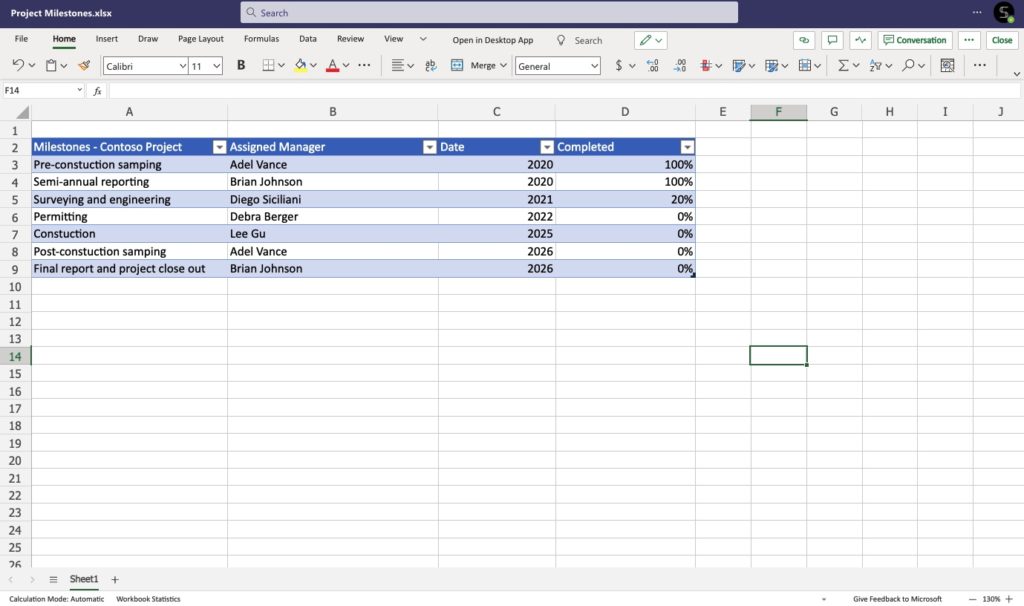
And each time a project reaches some important phase, you would like to notify your project team and stakeholders right from the Excel. Let’s quickly build a flow by integrating Excel, Microsoft Teams, and Outlook connectors.
To do this, start a new flow and choose an Excel action “For a selected row”. Then upload all required information with your Excel file name and table.
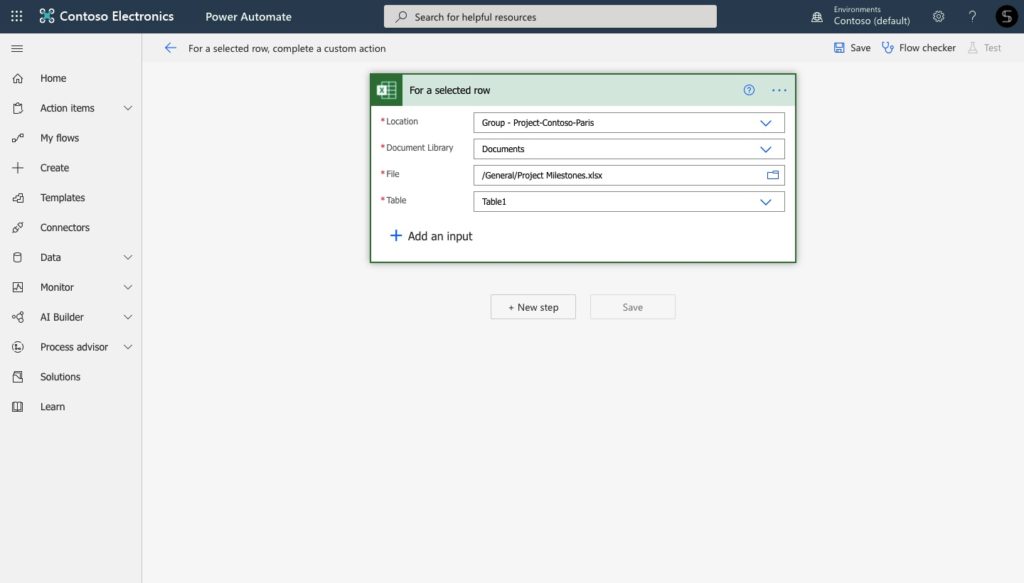
Next, choose the Microsoft Teams action “Post a message” and customize it using dynamic content from your Excel file.
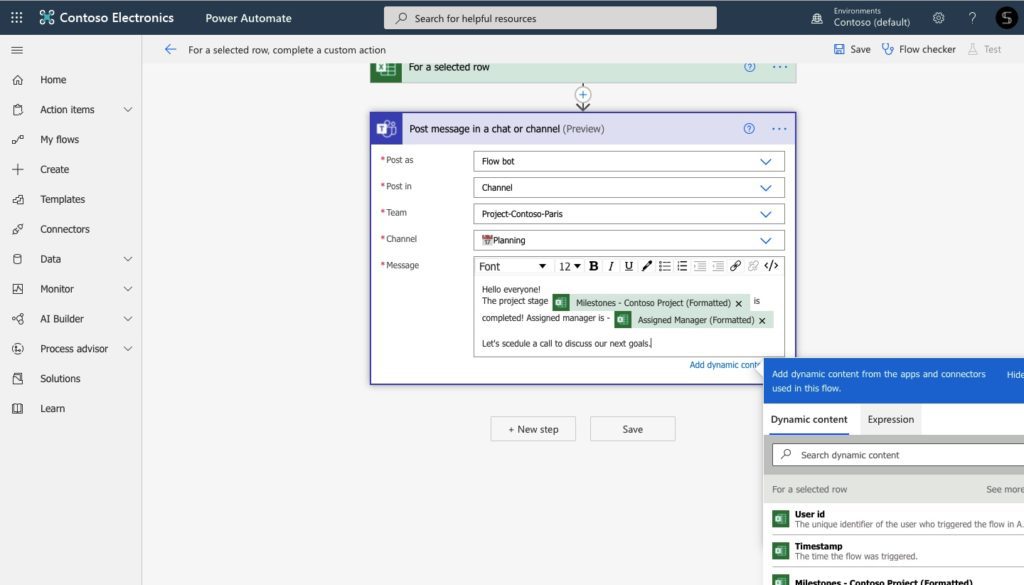
If you would like to notify your stakeholders as well, you can send them an automated email using the Outlook action “Send an email“. Again, customize it according to your needs.
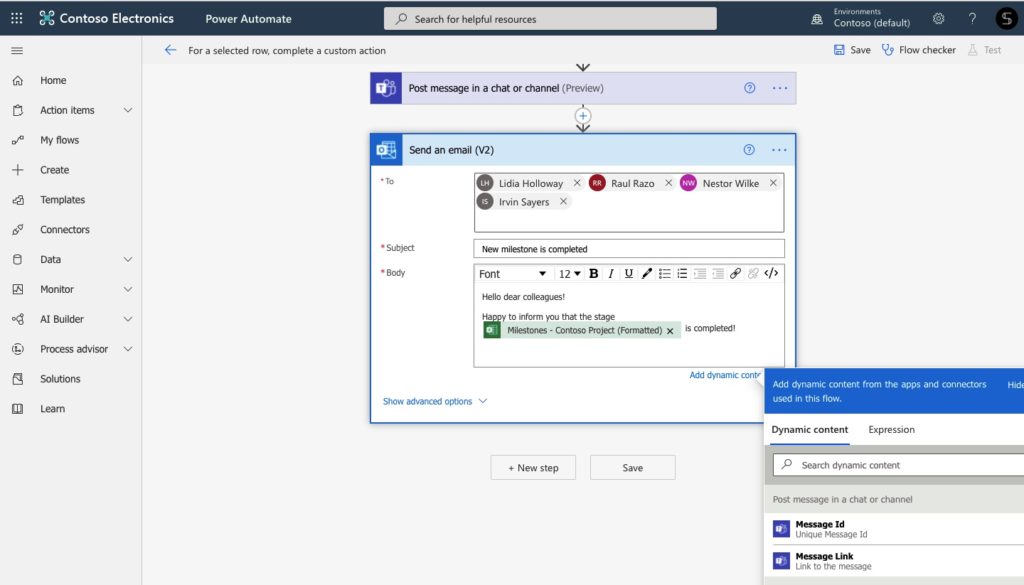
It’s done! Now, you should integrate your Power Automate into the Excel file.
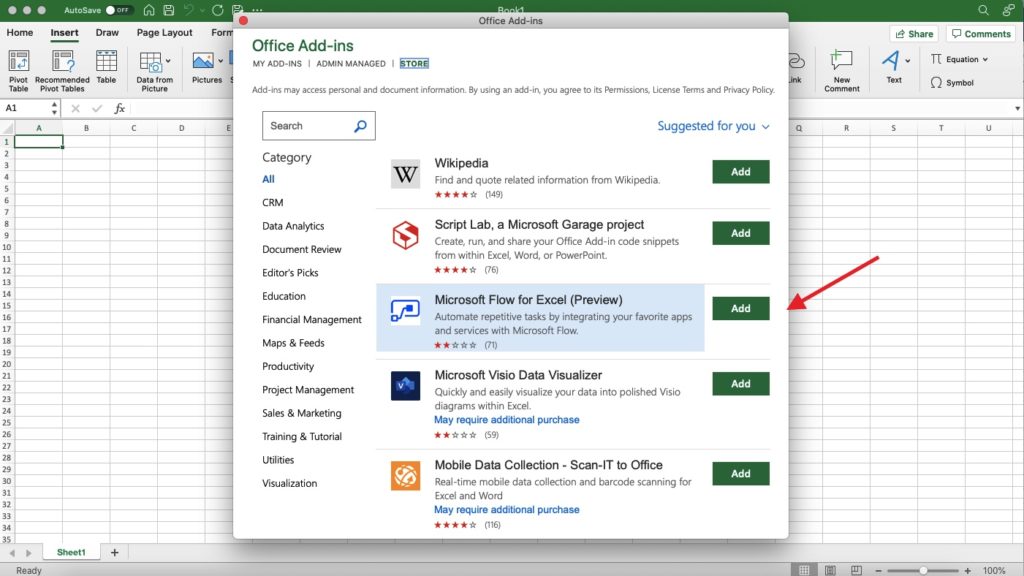
Each time you would like to automatically send an email for a selected milestone, just click on the needed Excel row and Teams notification with Outlook email will be sent automatically.
Improve task management and post daily reminders
We all know how important it is to manage the team’s tasks while collaborating on projects. Make sure your teammates don’t miss any essential tasks by building Power Automate flows with Planner.
For instance, with Power Automate you can set up daily or weekly reminders for your team about all upcoming tasks. Let’s see how it works.
Start with a scheduled flow and choose the recurrence of your future flow, for example, every day. You can also define the time zone and start time for these daily Planner reminders.
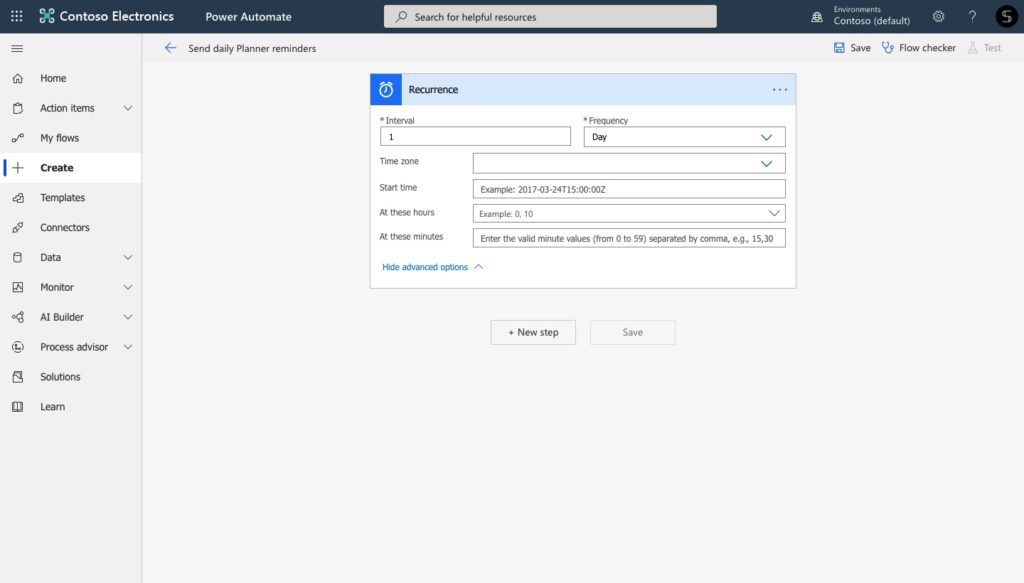
Next, choose the Planner action “List tasks” and define the required project team and their plan.
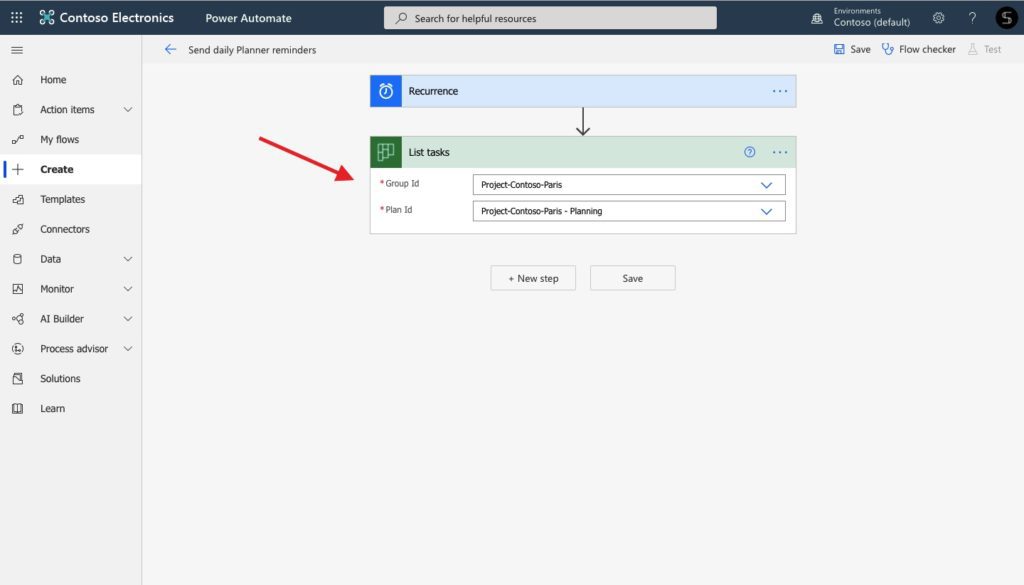
Then choose the action “Filter array” to set up the rule and repeat the following action. This means the message will be sent with the list of all not completed tasks.
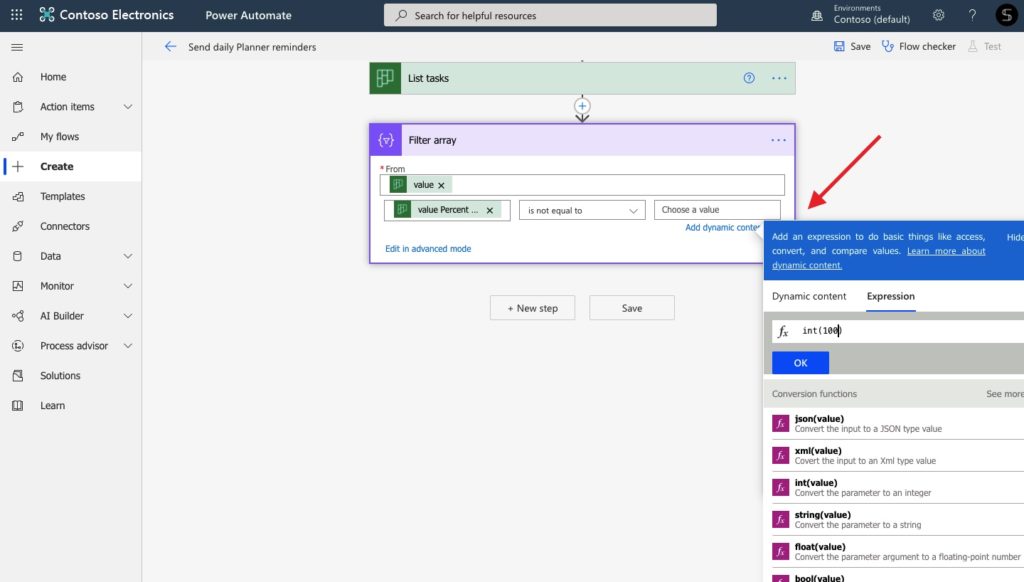
Choose the actions “Select” and “Create HTML table” to send a customized Teams message that will contain a table with all upcoming tasks, assigned people, and dates.
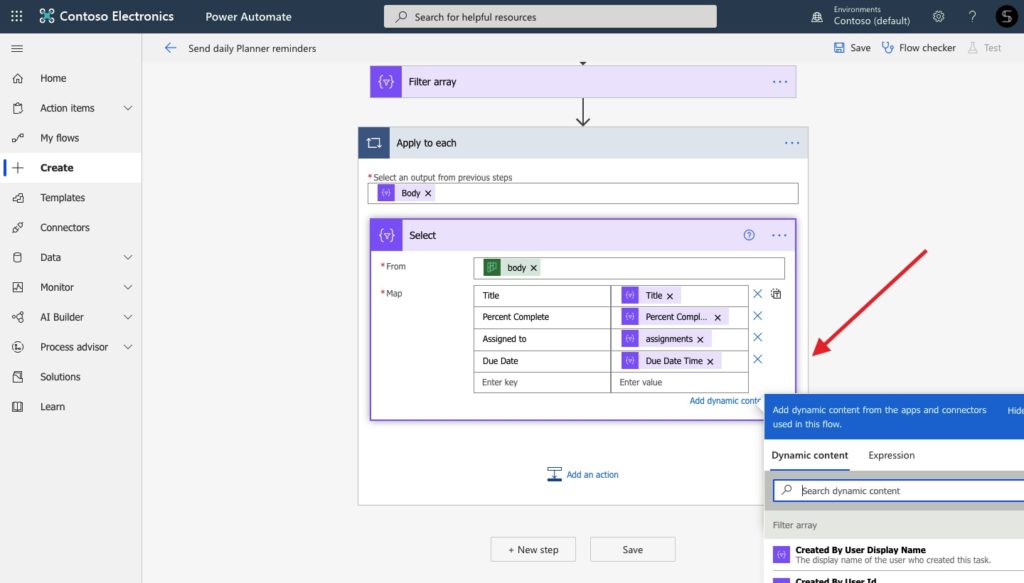
Finally, choose the Teams action “Post a message”, define the required team and channel, and add the HTML message to the post message.
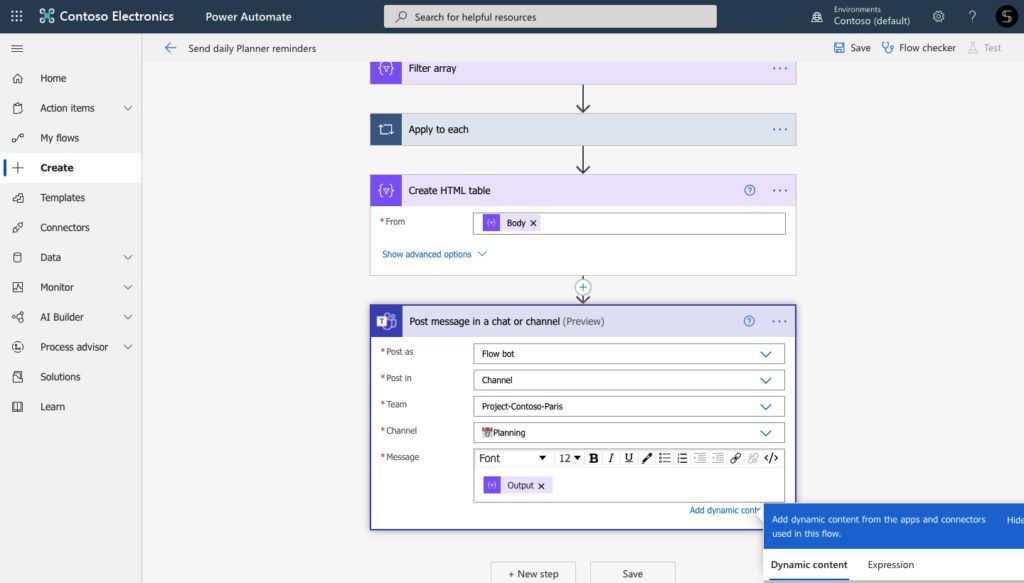
It’s done! Now, your project team will receive a daily message with all upcoming tasks.
Improve project documentation sharing and manage approvals
While working on a project, your teammates share tons of project documentation, including project reports, plans, budgets, change and risk trackers, and so on. Meanwhile, some of your key documents require the manager’s approval before sending them to customers or stakeholders. Then, you can automatically start an approval for every key project document.
Explore how to improve your file management in Microsoft Teams
To structure your project approval process, you can create a separate folder in your project management team for the documents that must be approved.
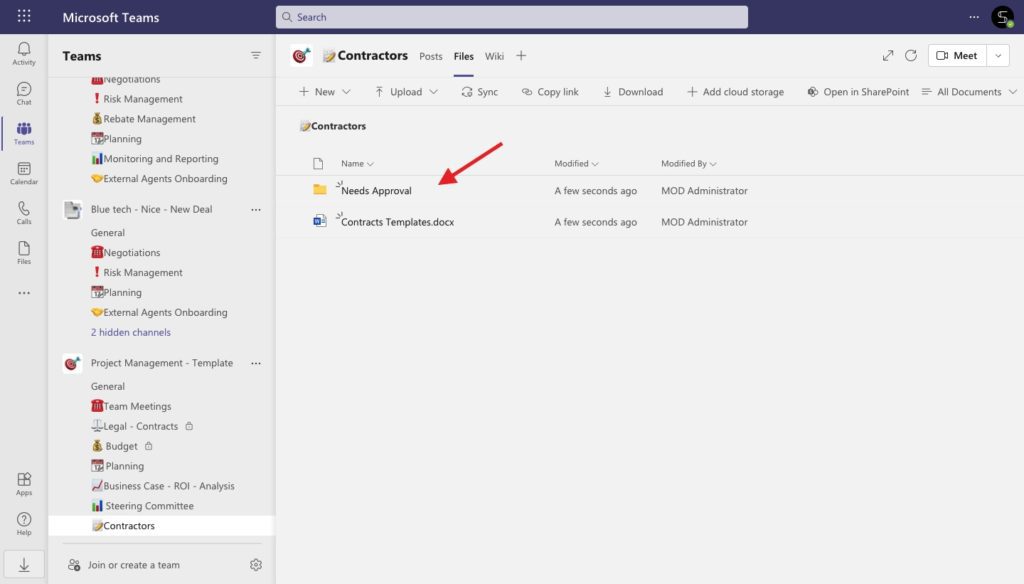
Then, start a new automated flow in Power Automate and choose the action “When a new file is created”. Here you can choose the right team and folders. Each time a new document is added, this flow will run automatically.
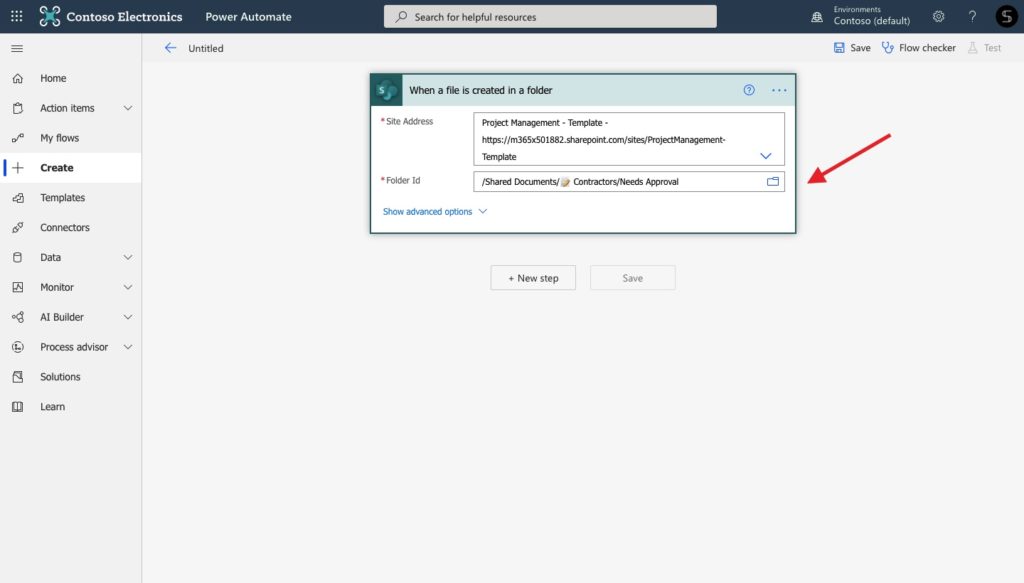
Then, choose the actions “Get my profile” and “Get managers”. This allows you to send approvals automatically to the user’s manager. Or you can skip this action and choose a specific project manager who will approve all the project documentation.
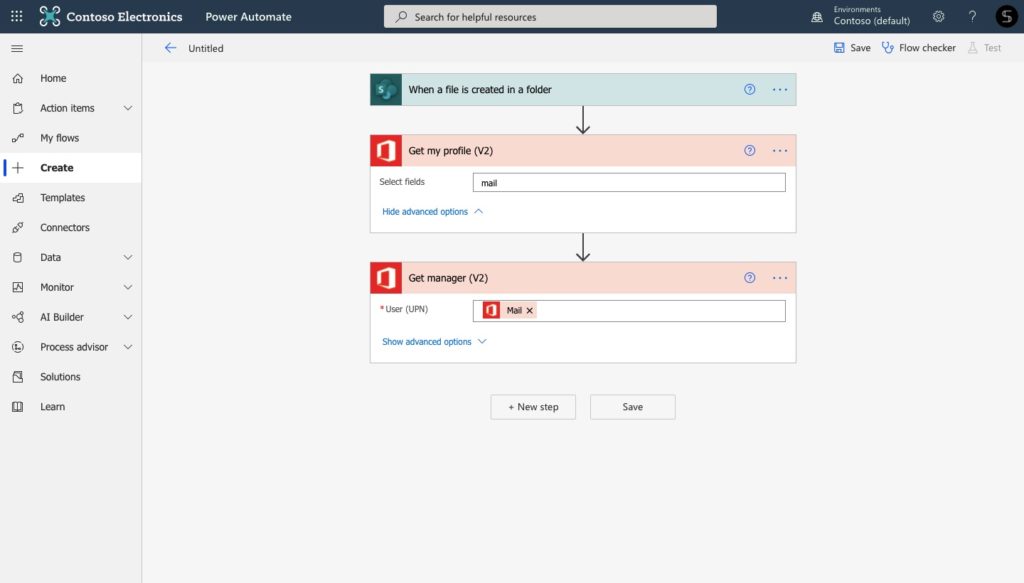
Finally, choose the action “Start and wait for an approval”. Here, you can customize everything with dynamic content from the previous steps. For instance, add the manager’s email and details from the file to make sure your manager quickly understands request details.
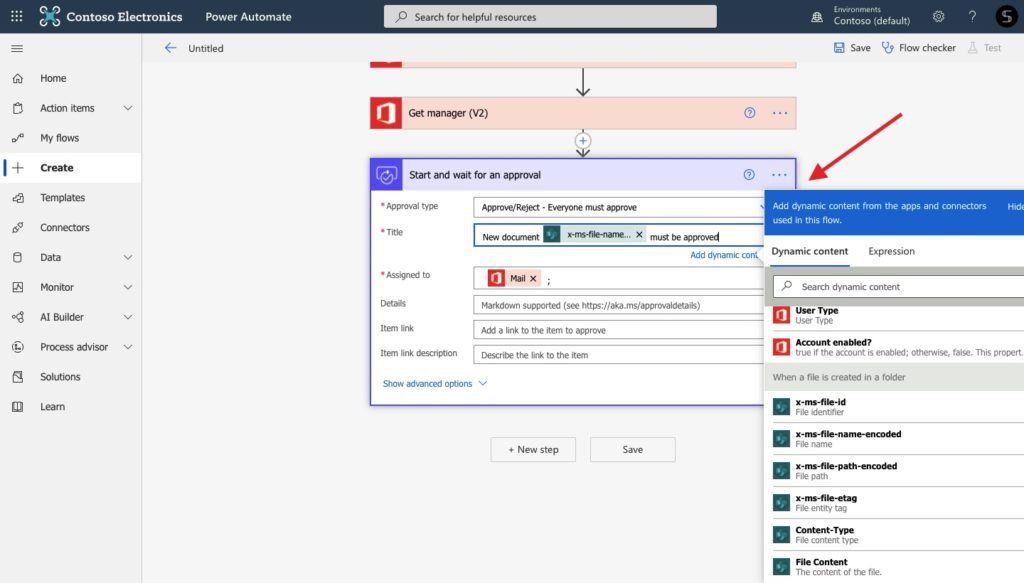
And it’s done! Now each time your teammate adds a new file, a manager will automatically receive a Teams notification with approval request and file’s details. Moreover, you can set up additional steps to notify a team when a file is approved or rejected.
To do this, start a new condition and customize Teams’ message depending on whether a request is approved or rejected. Follow the steps below.
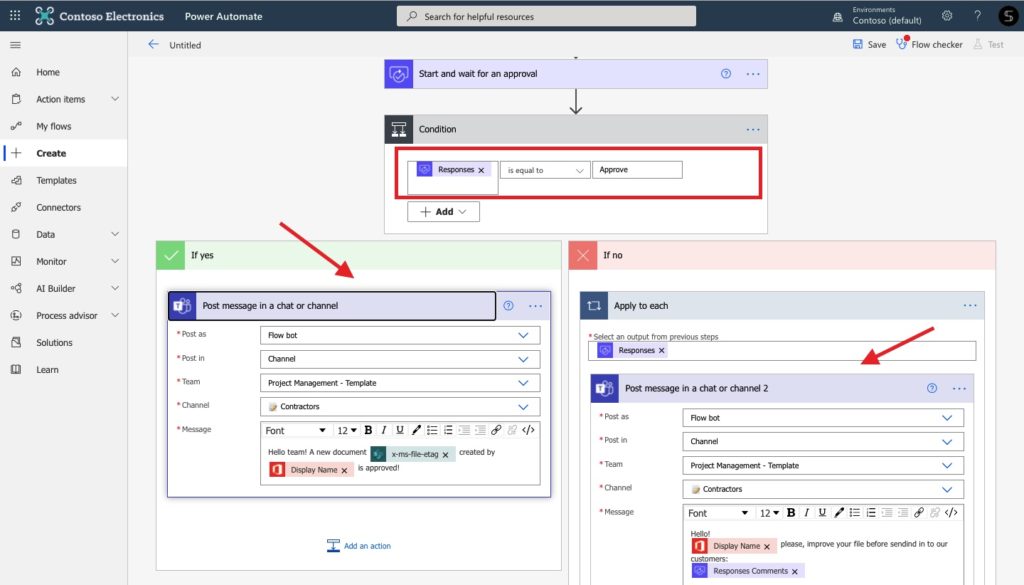
Manage project data and alert project team with Power Automate and Power BI integration
Do you use Power BI to manage project data? In fact, with Power BI you can build project dashboards to track data with useful visuals. Moreover, you can set up additional Power BI alerts to notify you when data changes beyond the limits you set.
Read more about Power BI and Teams integration.
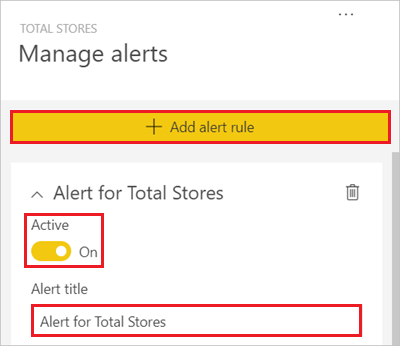
This feature may help you to track any project risk and quickly react to any changes. Moreover, with Power Automate you can automatically notify your team about Power BI alerts.
To do this, build an automated Power Automate flow and choose an action “When a data driven alert is triggered”. Then choose the required Alert ID.

After, choose the Microsoft Teams action “Post a message” and customize it using the dynamic content from the Power BI.
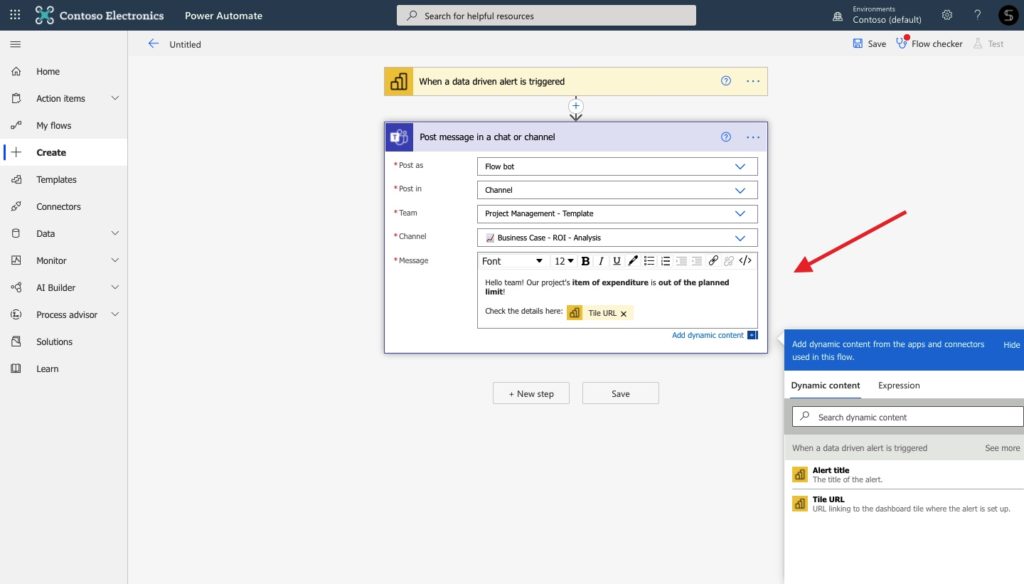
And now your project team will be notified each time data changes beyond any limit and they can start working on it immediately.
Connect project management apps with Power Automate
Do you use project management apps such as Asana, Trello, or Jira? Did you know you can integrate them with your Teams environment and build automation in Power Automate? In fact, the most popular apps have their own Power Automate connector that allows users to integrate different apps and optimize business processes. Let’s go through some examples.
Read about the best project management apps for Microsoft Teams
Improve task management with Trello and Microsoft Planner
Suppose you run different projects using Trello cards. At the same time, you need to collaborate with other project team members in Microsoft Teams. So how to align your project tasks between both Trello and Microsoft Teams?
To improve collaboration on project tasks, you can build Power Automate flow for Trello and Microsoft Planner. To do this, choose a Trello trigger “When a new card is added to a board” and choose the required board ID.
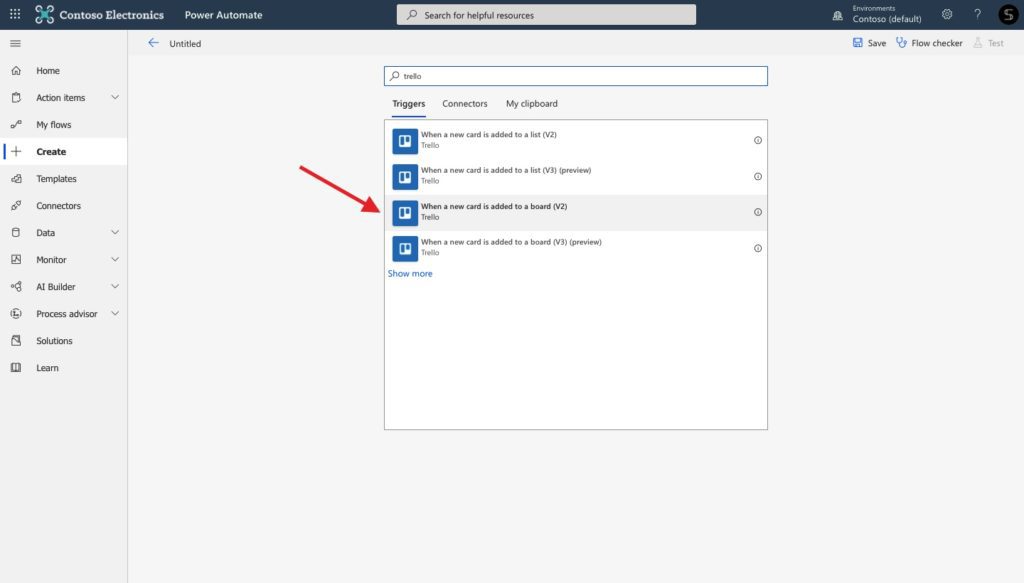
Next, add the Planner action “Create a task”. Here you can define the Planner, as well as customize Planner tasks using the dynamic content from Trello.
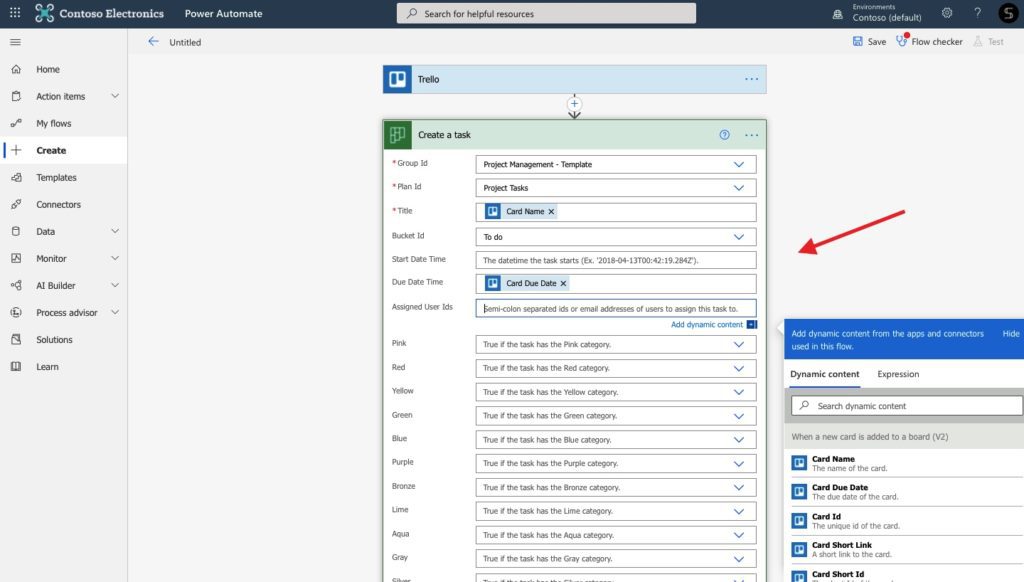
This simple flow will allow you to copy Trello tasks right into your Microsoft Teams environment. Thus, your team members won’t miss any essential tasks and deadlines.
Create teams from the template for each project in Asana
Wondering how to quickly create an ideal collaborative workspace for each new Asana project? Well, by building a flow with the custom connector you can immediately create a pre-built project team with all content included. (Standard and private channels, pre-built set of project tasks, guidelines and files, permanent members, and much more)
Read more about the Project Management templates for Microsoft Teams
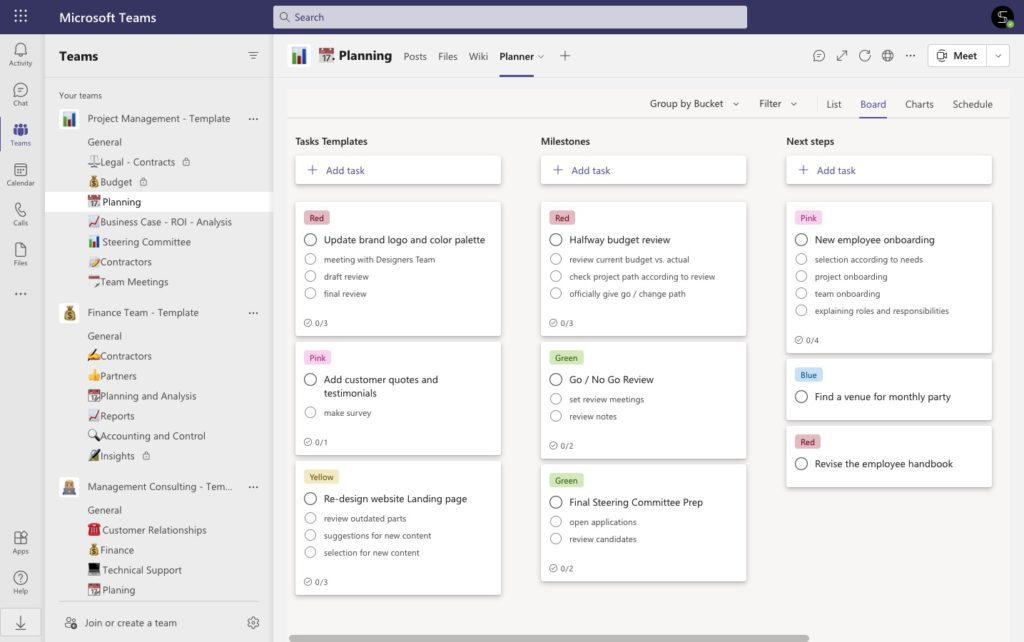
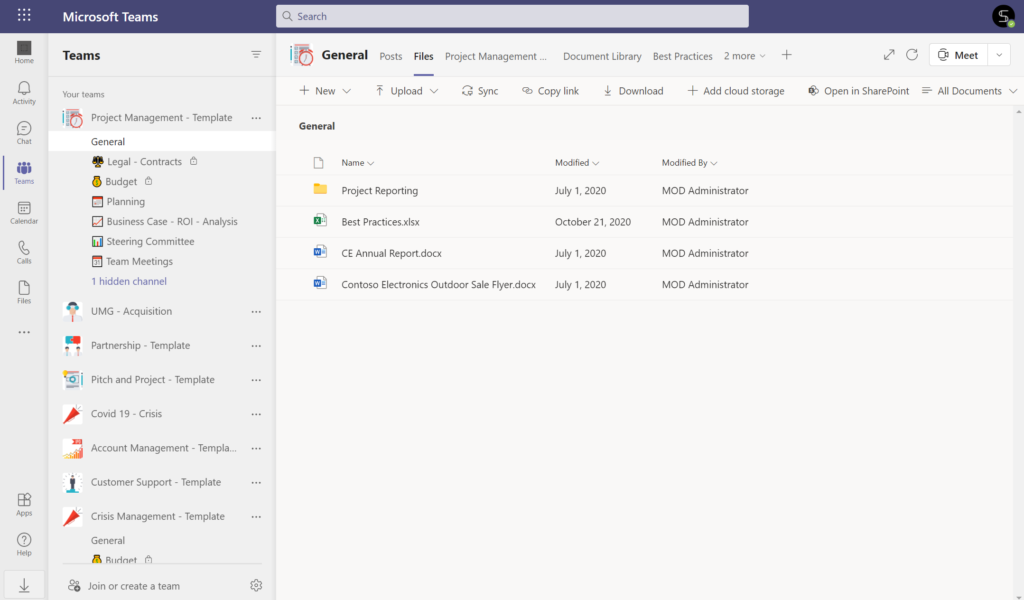
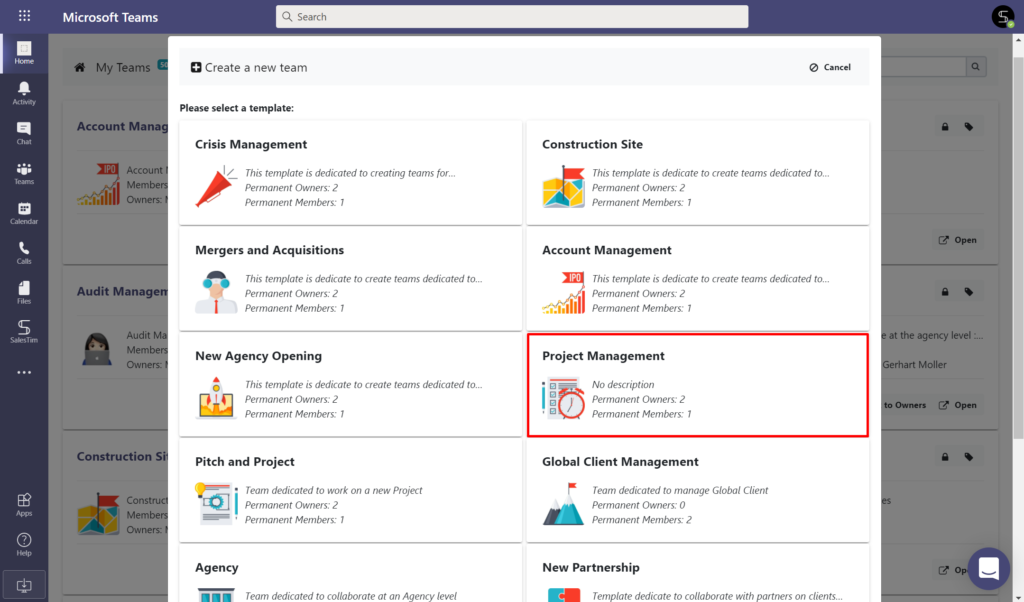
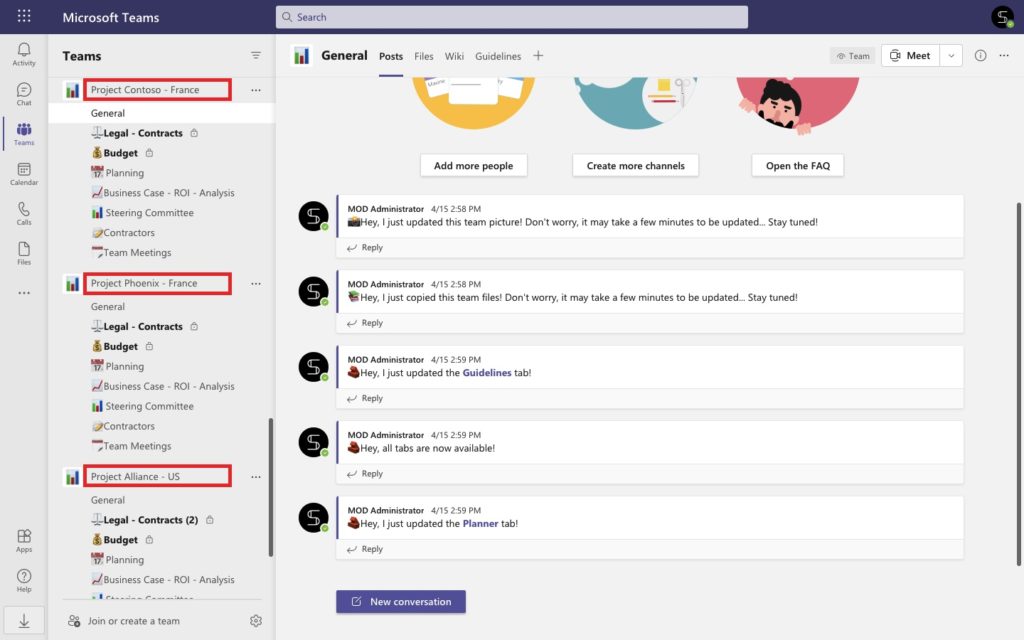
To do this, use the Asana trigger “When a new project is created”.
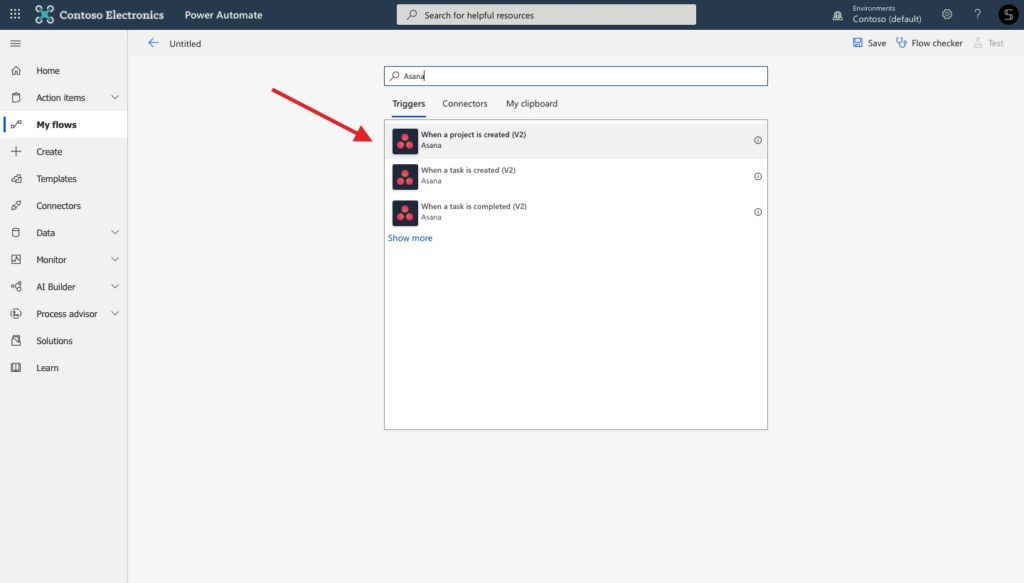
Then, using the nBold connector you can build a team from the template.
Read here how to install the nBold connector
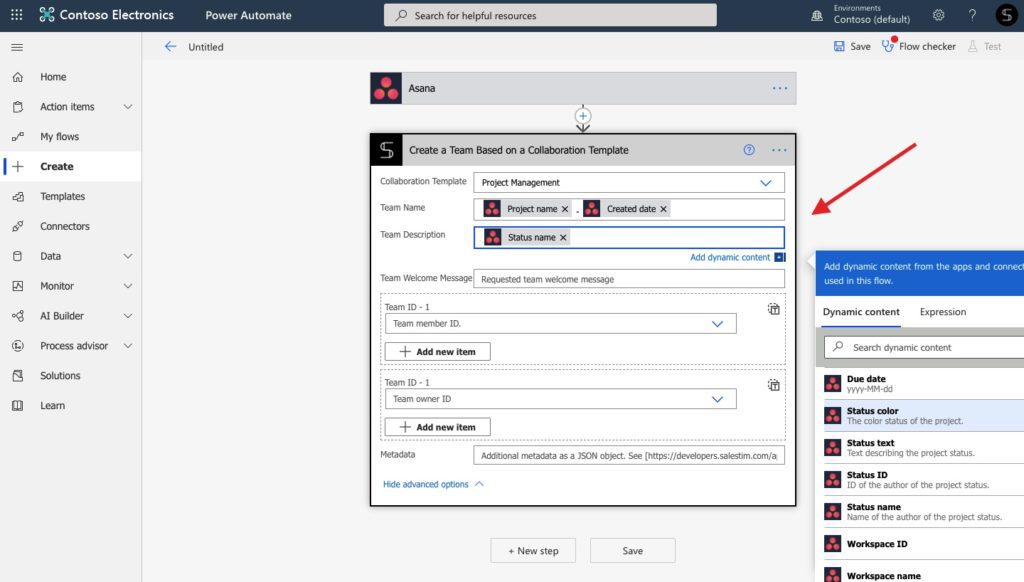
With this flow, you will get a pre-built collaboration workspace in Microsoft Teams with channels, tasks, permanent members, and more each time a new project is created in the Asana app. This option will allow you to get the same level of execution from one project to another. Moreover, you will get a structured Teams environment with the same teams’ organization.
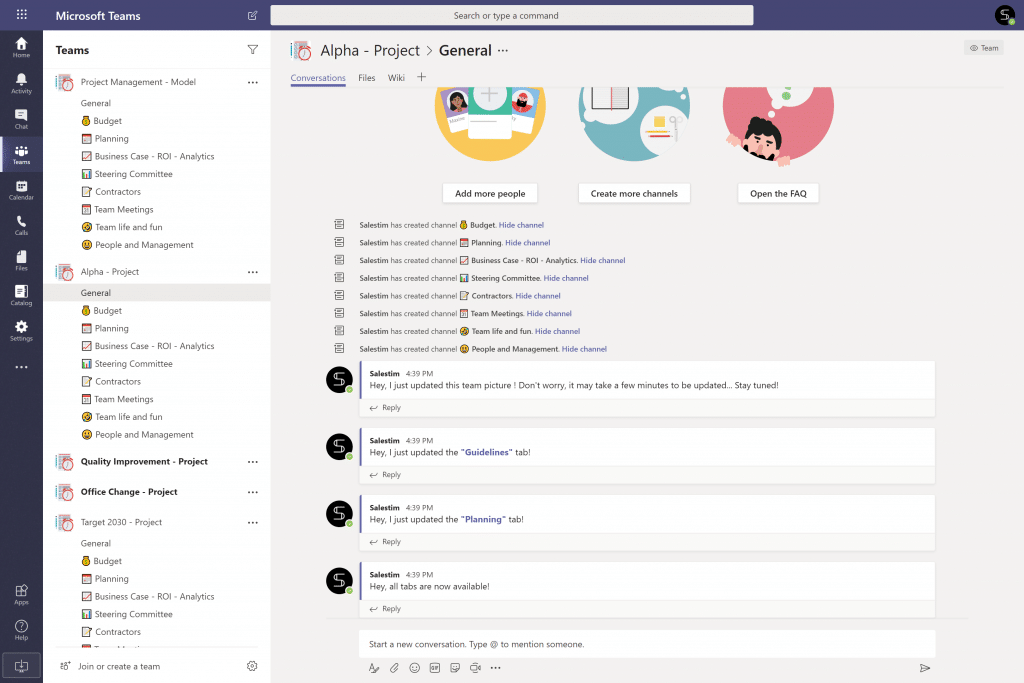
Build your first Microsoft Teams template
Notify your team about a new project in Jira
In the same way, you can build Power Automate flows with a Jira connector. Let’s say, as a project manager you create each new project in the Jira app. But how to quickly notify your team members and start to collaborate on projects immediately?
By connecting Jira and Microsoft Teams you will automatically send a Teams post into your Project Management team each time a new project is created in Jira. To do this, find the Jira connector and choose a trigger “When a new issue is created”
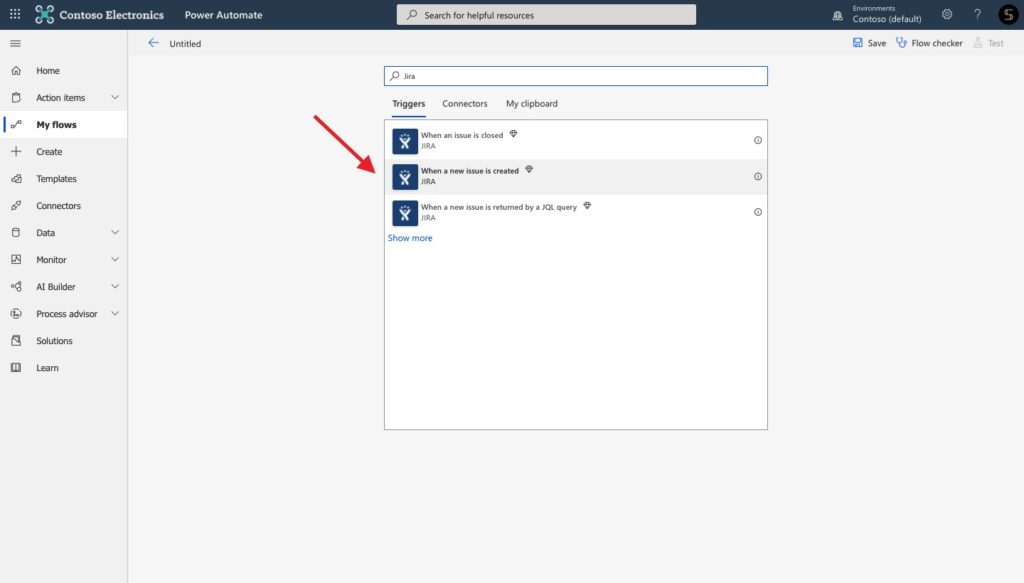
Then choose the Microsoft Teams action “Post a message” and customize it with the details from the Jira app.
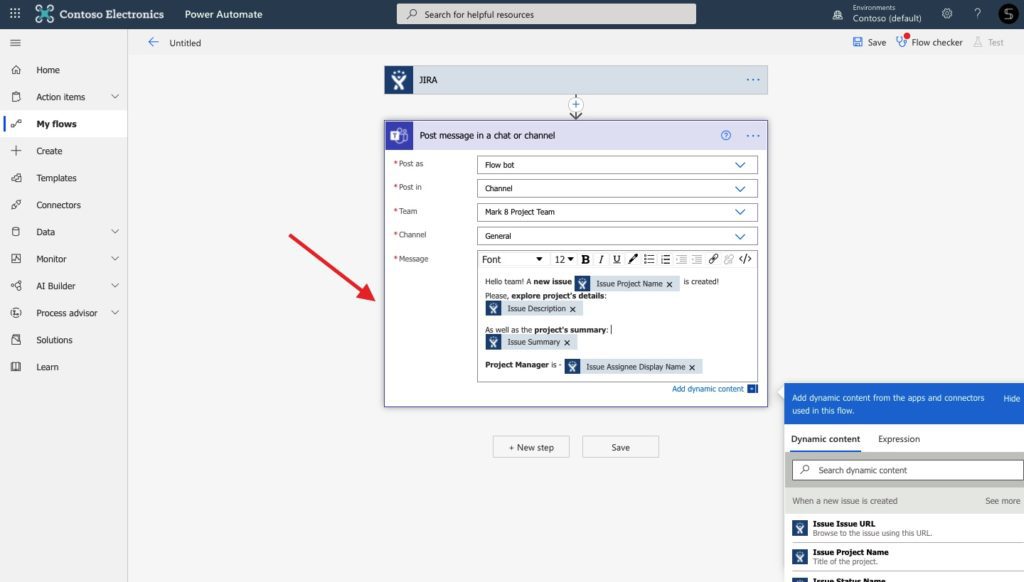
In this article, we described some of the Power Automate capabilities that can help you to improve your project management at scale. Contact our team and address any of your business needs around Microsoft Teams collaboration.